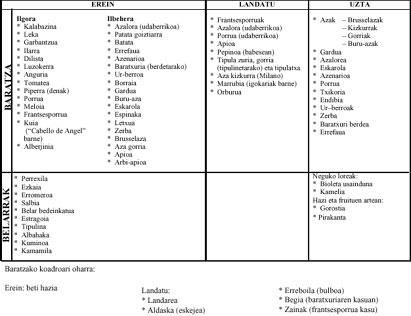Monthly plant magazine. February
CURIOSITY
Introduction
I would like this section to be a kind of monthly magazine of the wide range of plants (too extensive). When we talk about plants, many different eyes are observed: gardeners, mushrooms, herbalists, peasants, gardeners, guards, jammers, winegrowers, etc. While it is difficult to unite these closed and exclusive worlds, in this section we want to give them some kind of bond.
We will begin monthly reviewing the “state” of satellites, planets or stars, eclipses, seasons, increasing or decreasing, etc. Next we will analyze the picture of the works of the gardens, the world of the “herbs”, the flowering, the phrases and the stories about the month, to end with the so-called “rarity”, in which we will see surprising things.




How do plants perceive the arrival of spring?
Spring for humans begins when the Sun enters the constellation of PISCES (this year, March 20, at 16.29 hours). But, so that plants can open their eyes, leaves and flowers, how do they perceive spring?
In this awareness of the arrival of spring, plants have above all three parameters: temperature, luminosity and evapotranspiration.
Temperature:
This is the most significant change, which rises between 3 and 4 degrees. With this change the normal temperature is in addition to the minimum for plant life.
On the other hand, this increase usually considers the number of hours of cold (less than 7 degrees) required by each plant species to start the next cycle. When the number of hours of cold has been completed, the plant “believes” that winter has passed.
Luminosity:
As mentioned at the beginning, in March the day (between sunrise and sunset) gains an hour and twenty minutes.
As the energy source of plants is clear, it also favors spring awakening. The plant perceives the possibility of eating and reliving winter reserves.
Evapotranspiration:
Light and heat reduce moisture and drive water evaporation into the soil. This also prompts you to start sweating the plant cells, taking water from the soil (mixed with food) and starting the annual cycle.
Some experiences:
When it comes to getting very early tulip flowers, the rodaballos or bulbs enter the fridge. Cold hours will recover faster and fertilize sooner, completing the cycle before and advancing the flowers.
The flower of food ( Euphorbia pulcherrima) is paid at Christmas and the day of all the saints of the Urrelilia much more than normal.
In plants of a year of life, like these, the flower, which will then give seeds of fruits, is the end of the cycle. In the case of the flower of food and urrelilia, to achieve flowering in a specific few days, we must “know” that the plant is approaching the end of the cycle. How? Reducing brightness. In practice they are covered with dark fabrics a few days before, while the plant develops flowers.
Final Note: If any reader has doubts about the plants, go to Elhuyar and the author will try to answer in the following number. |





